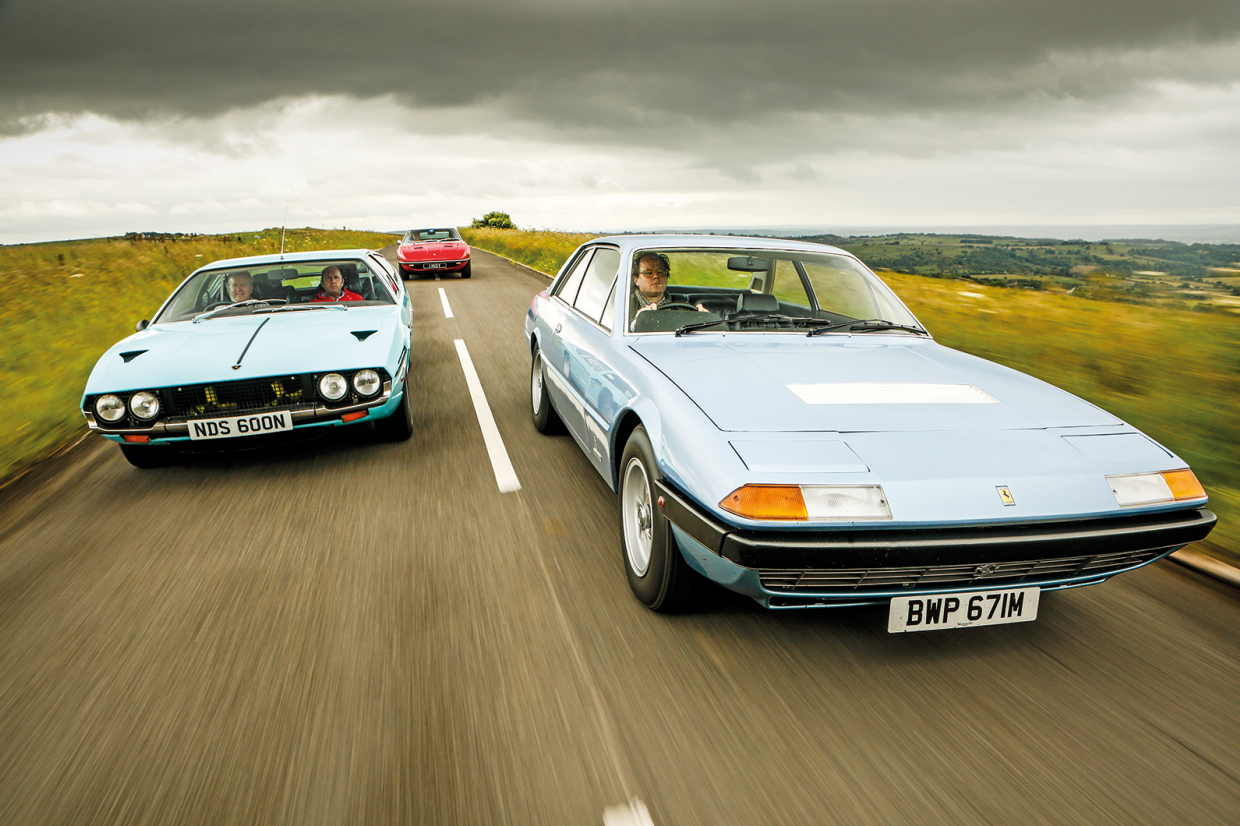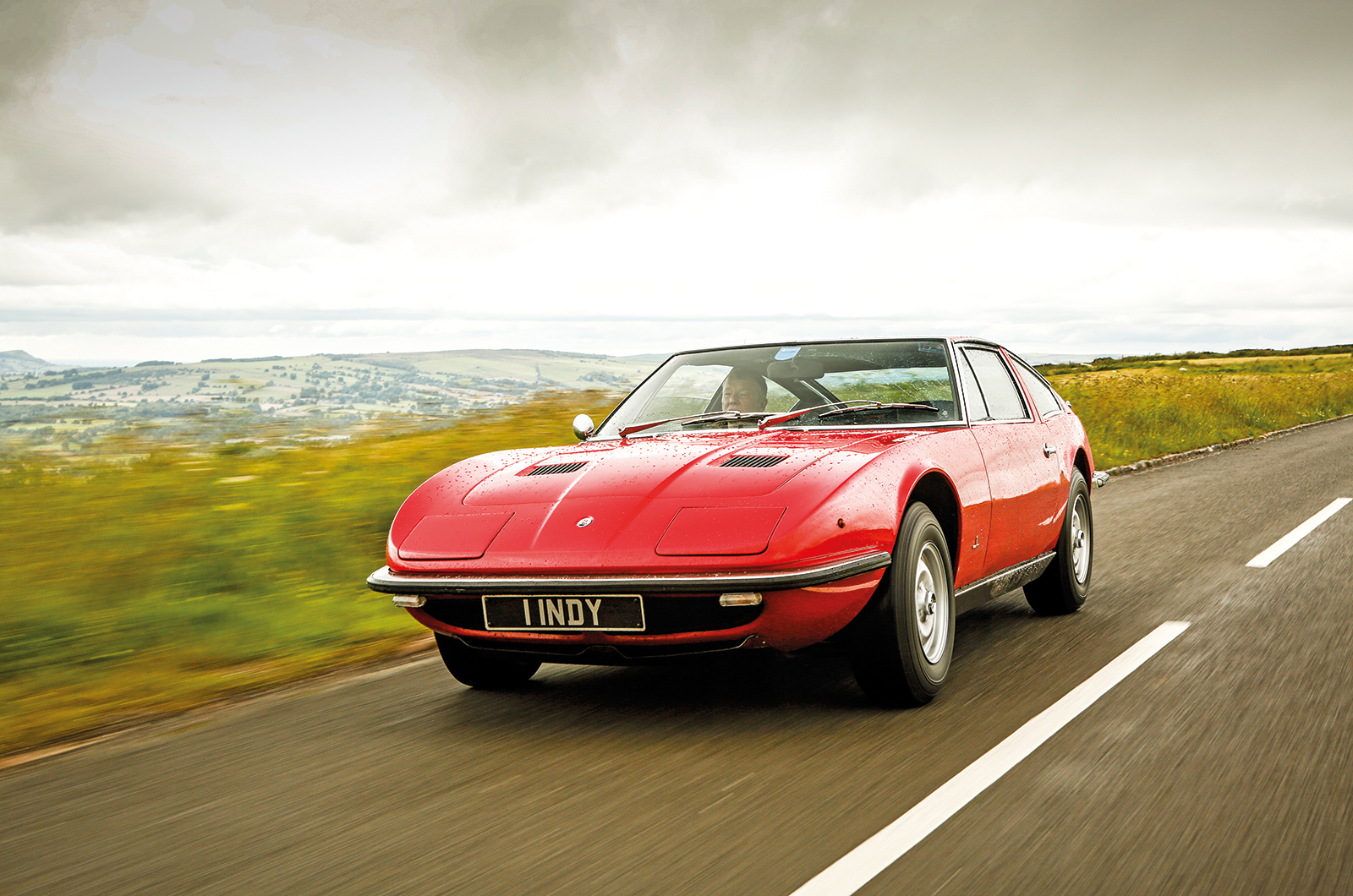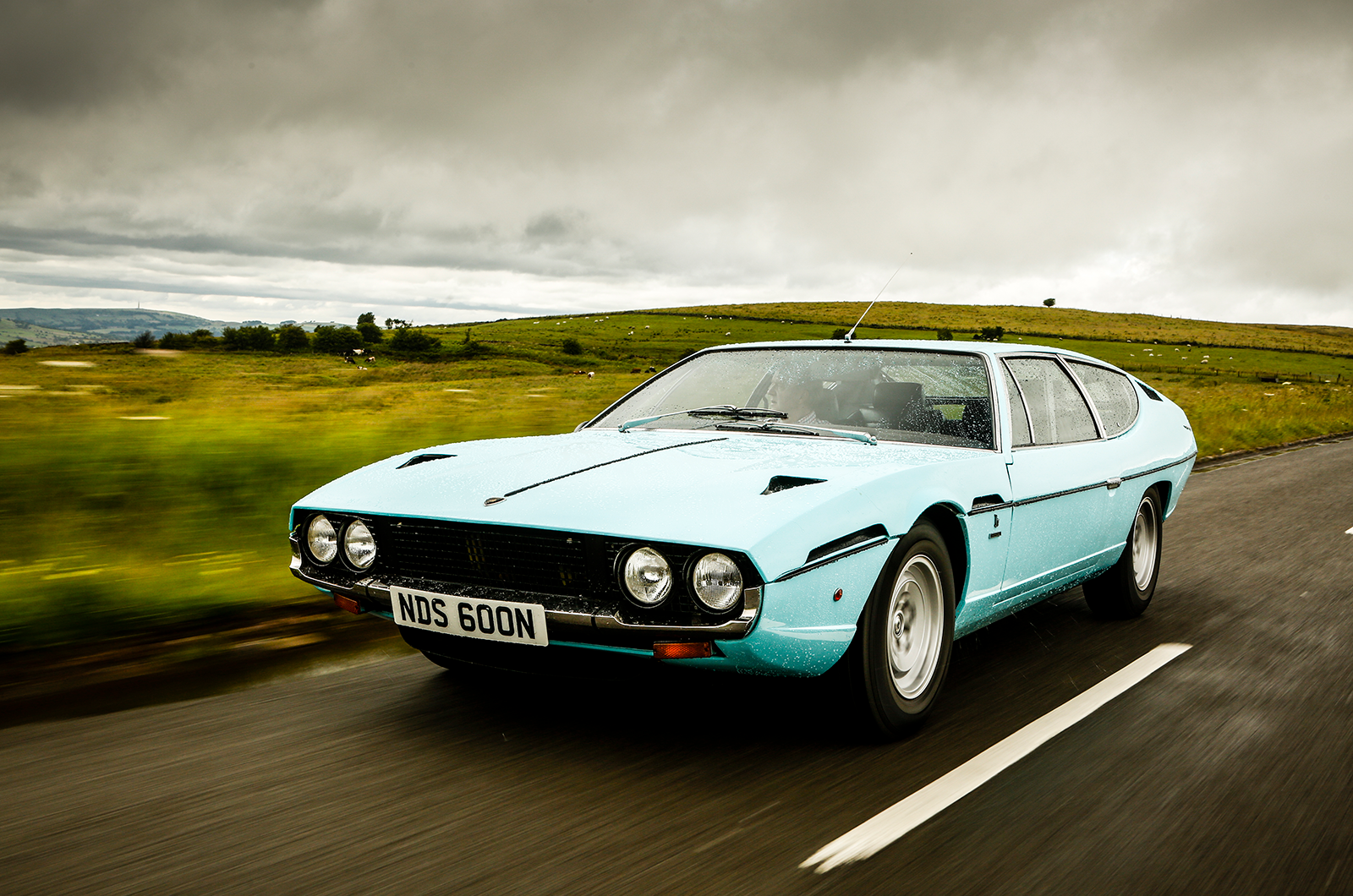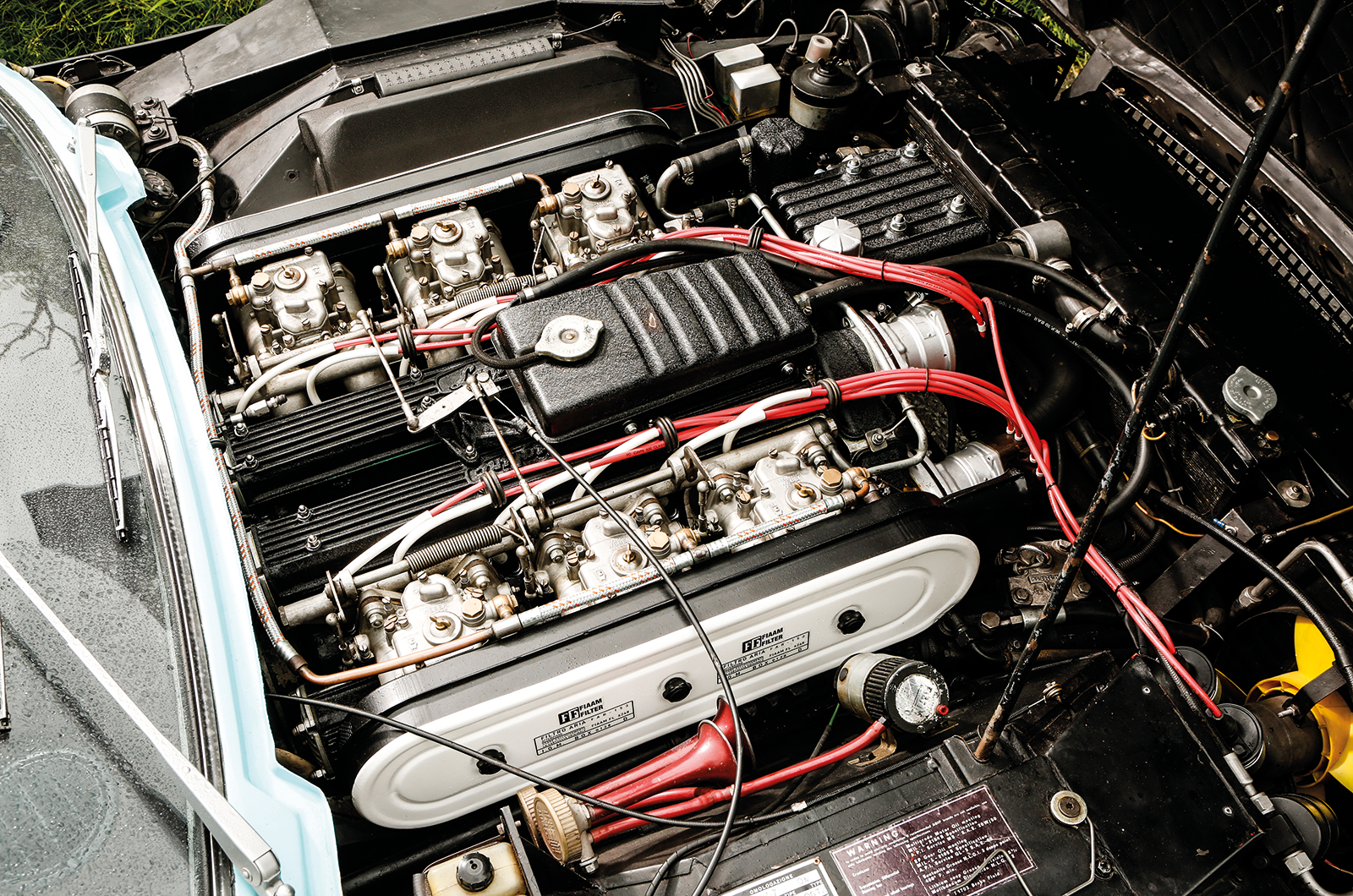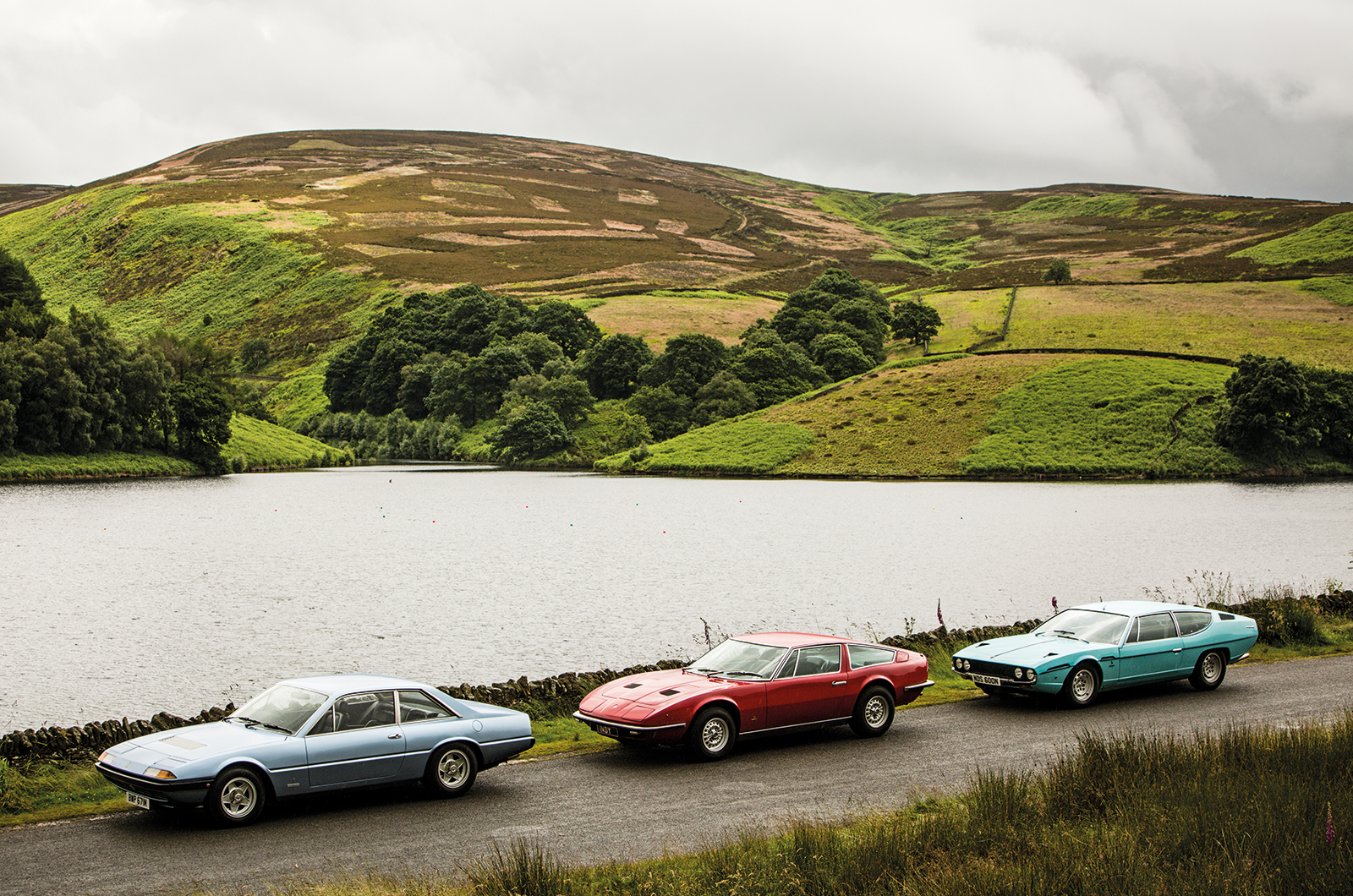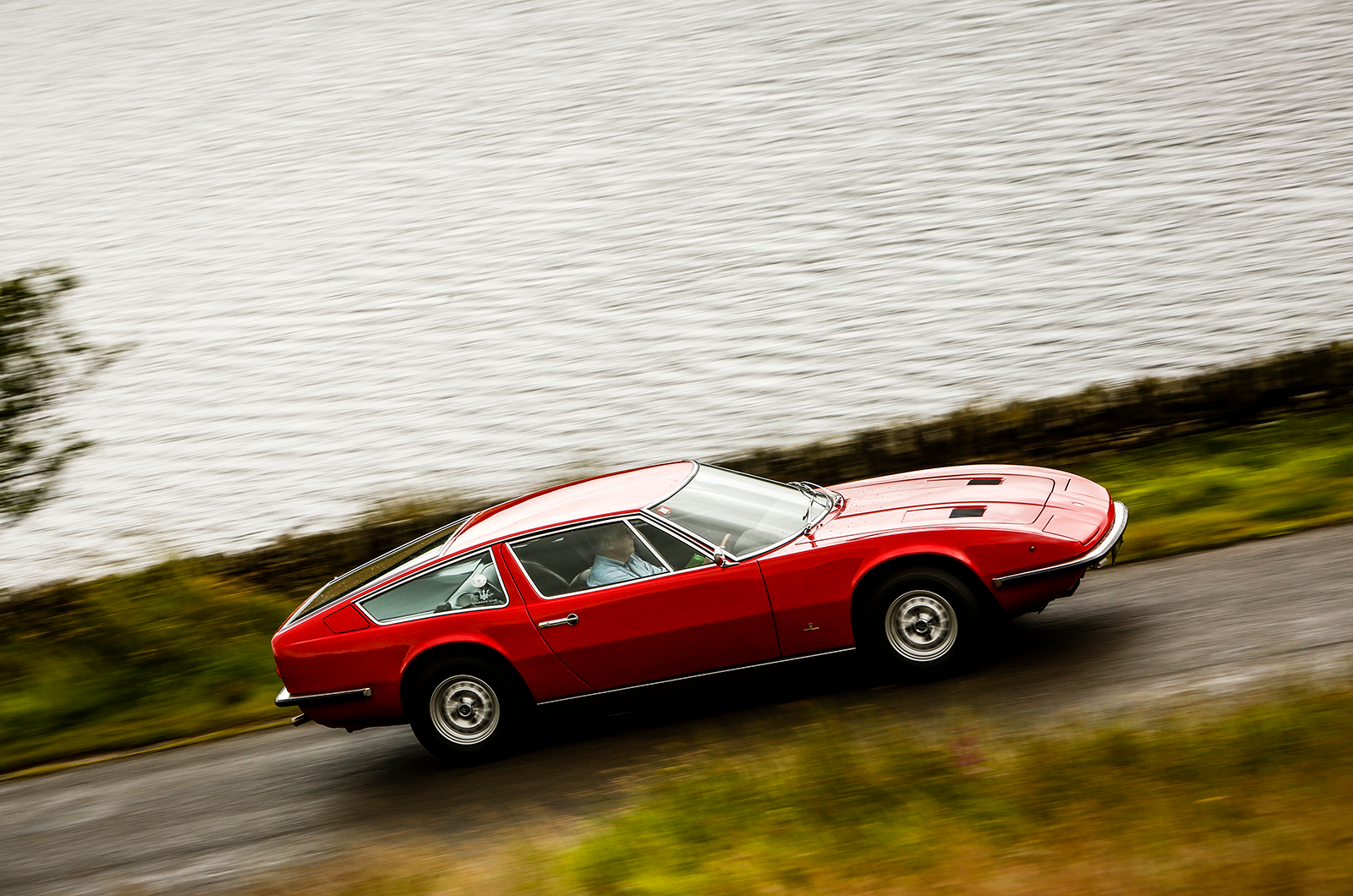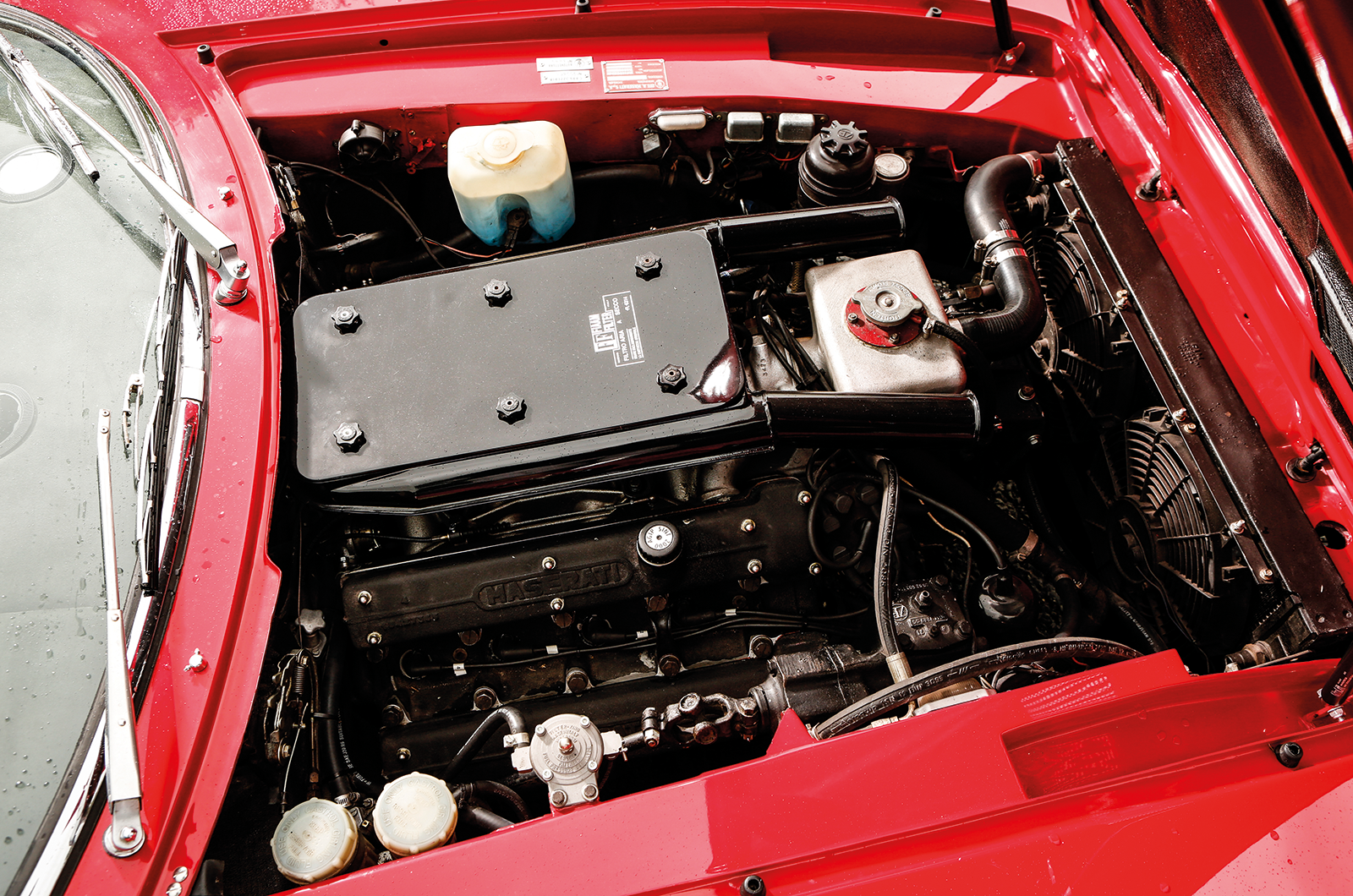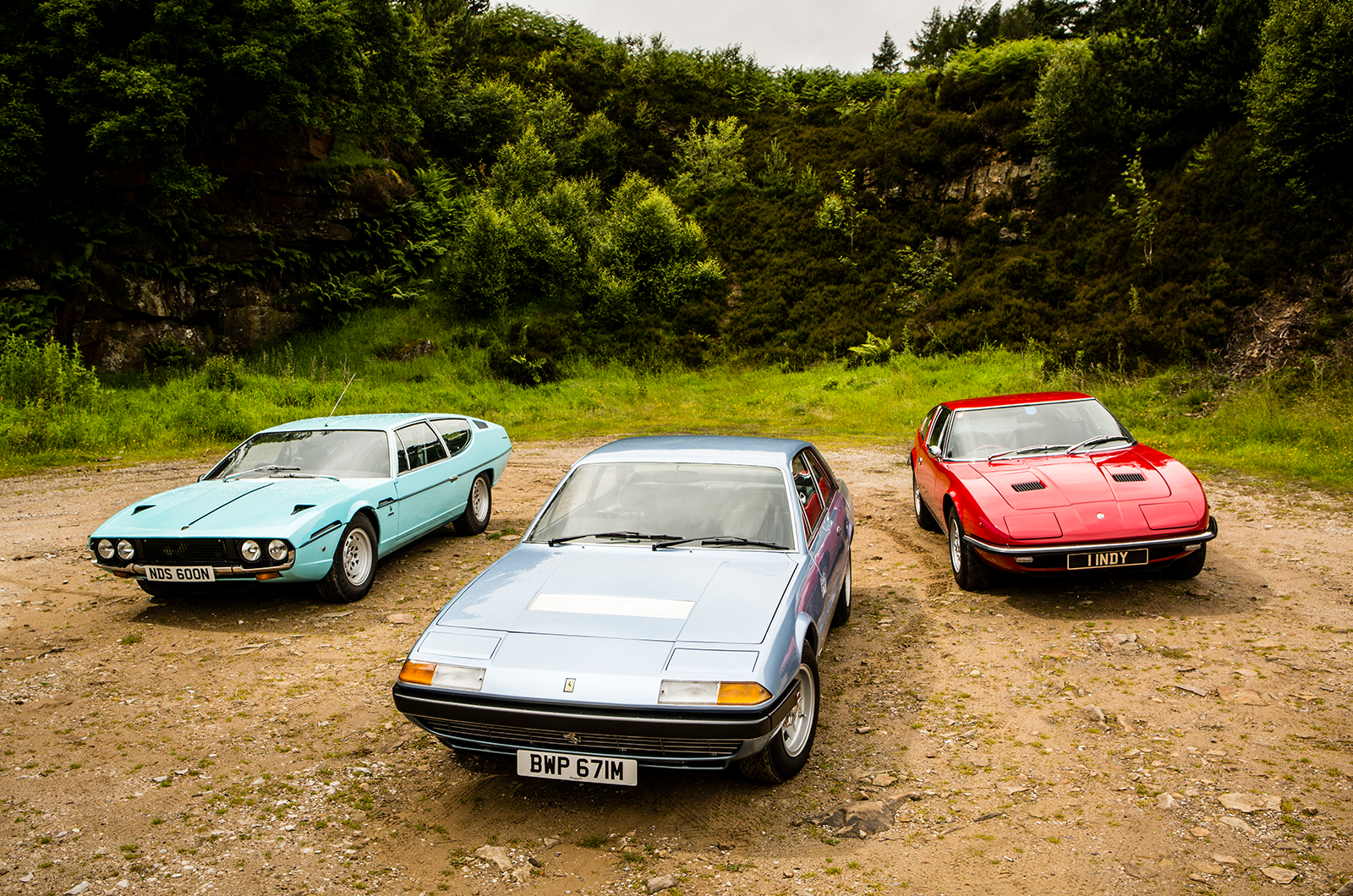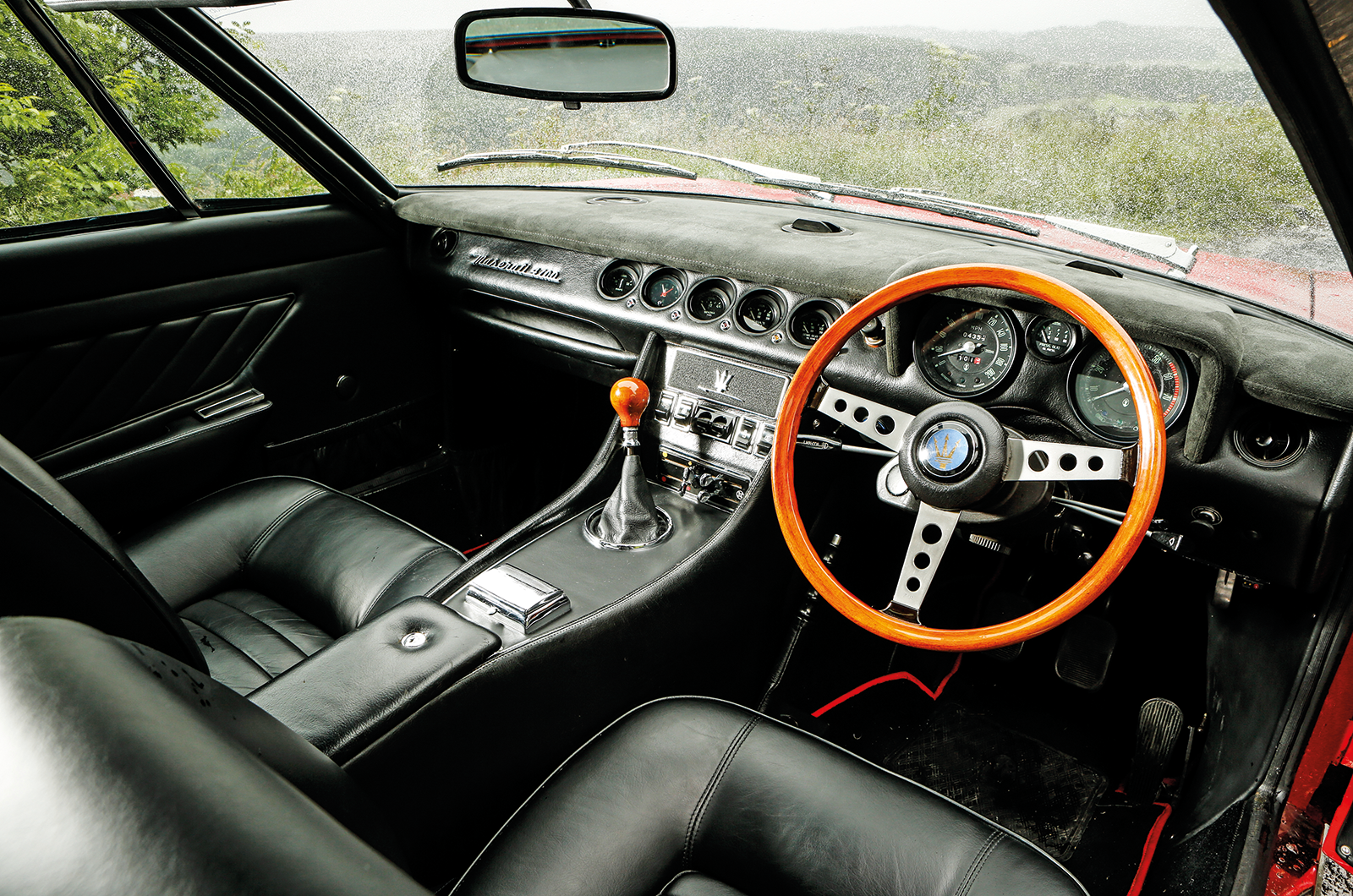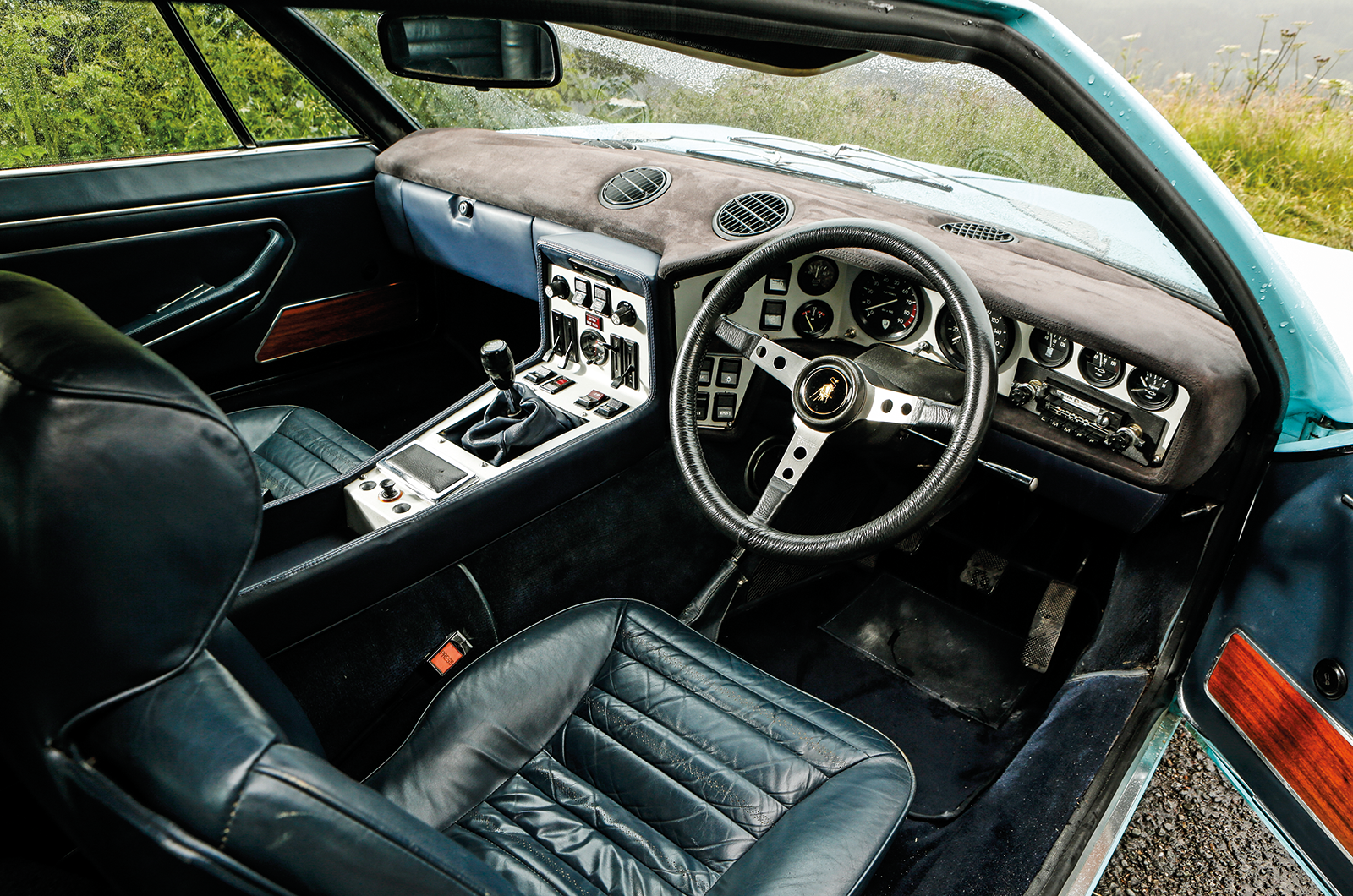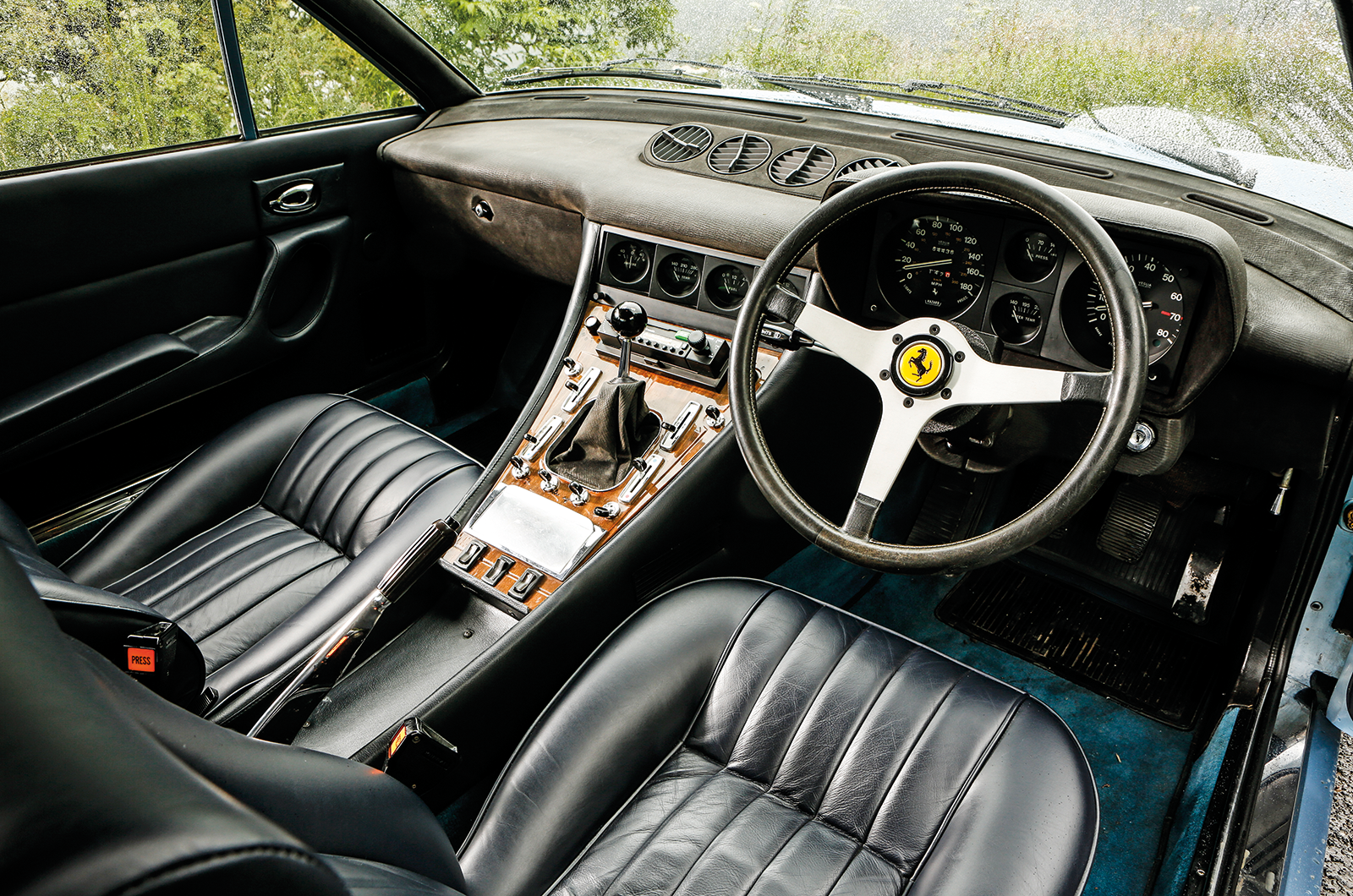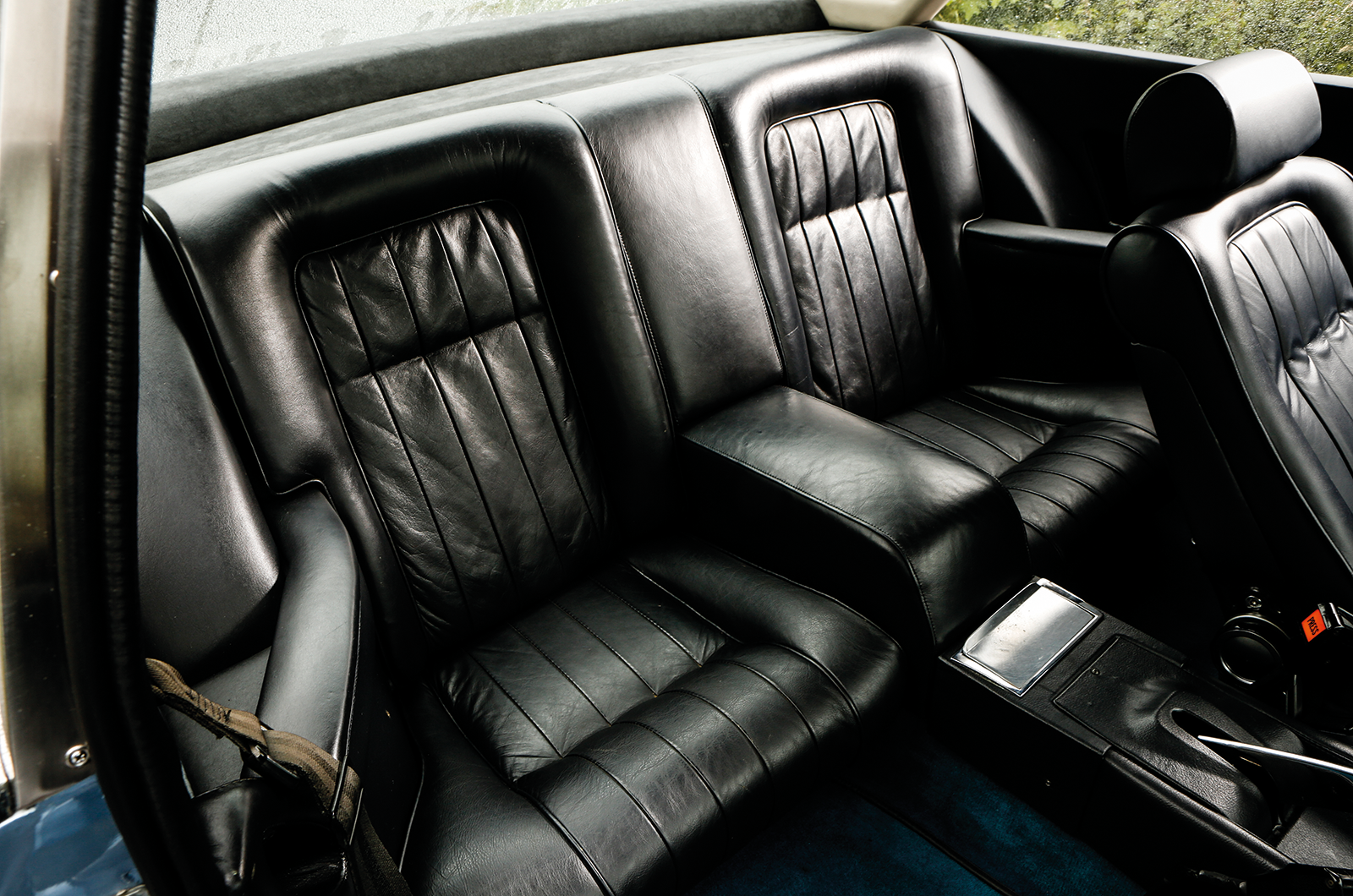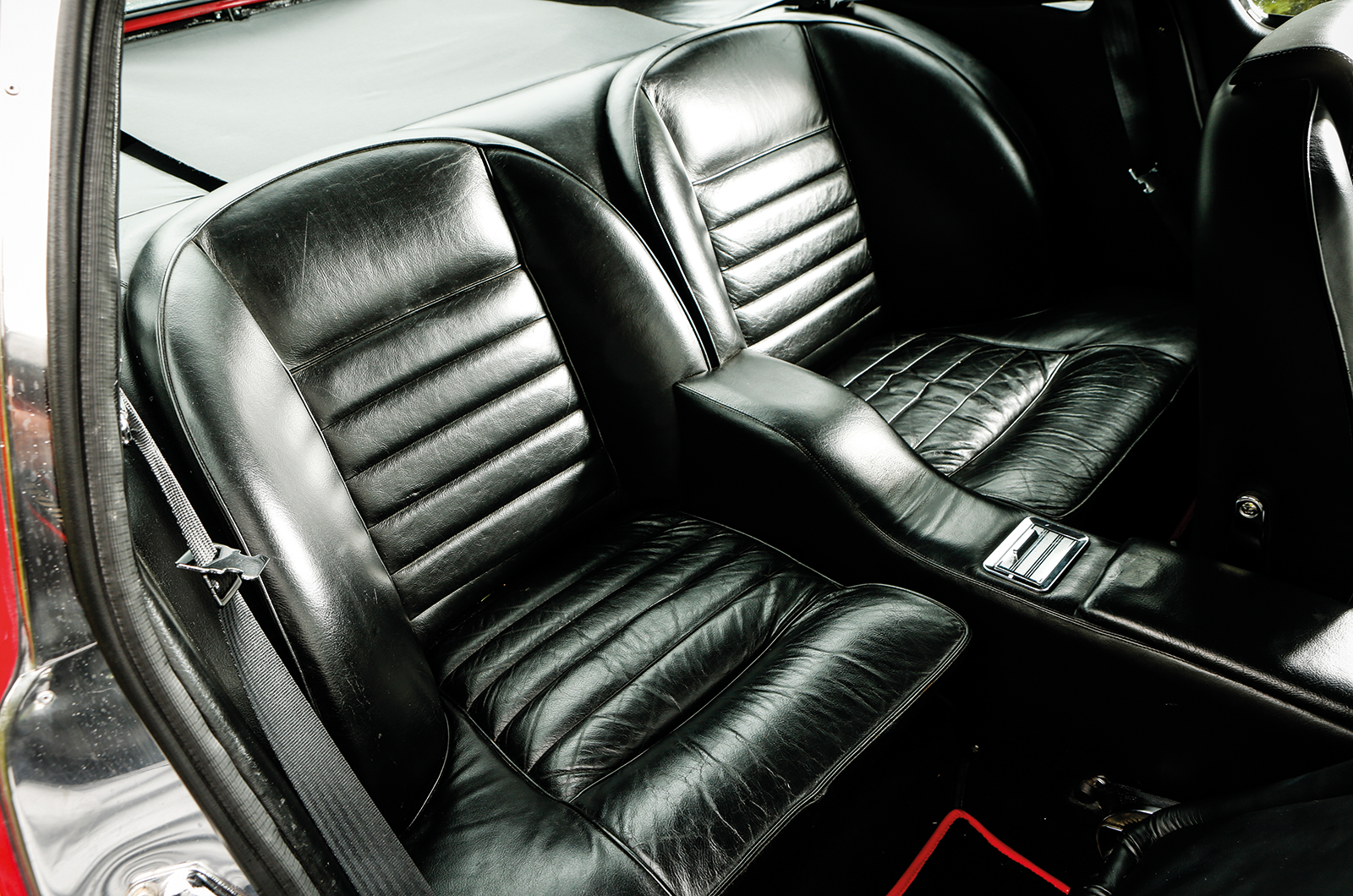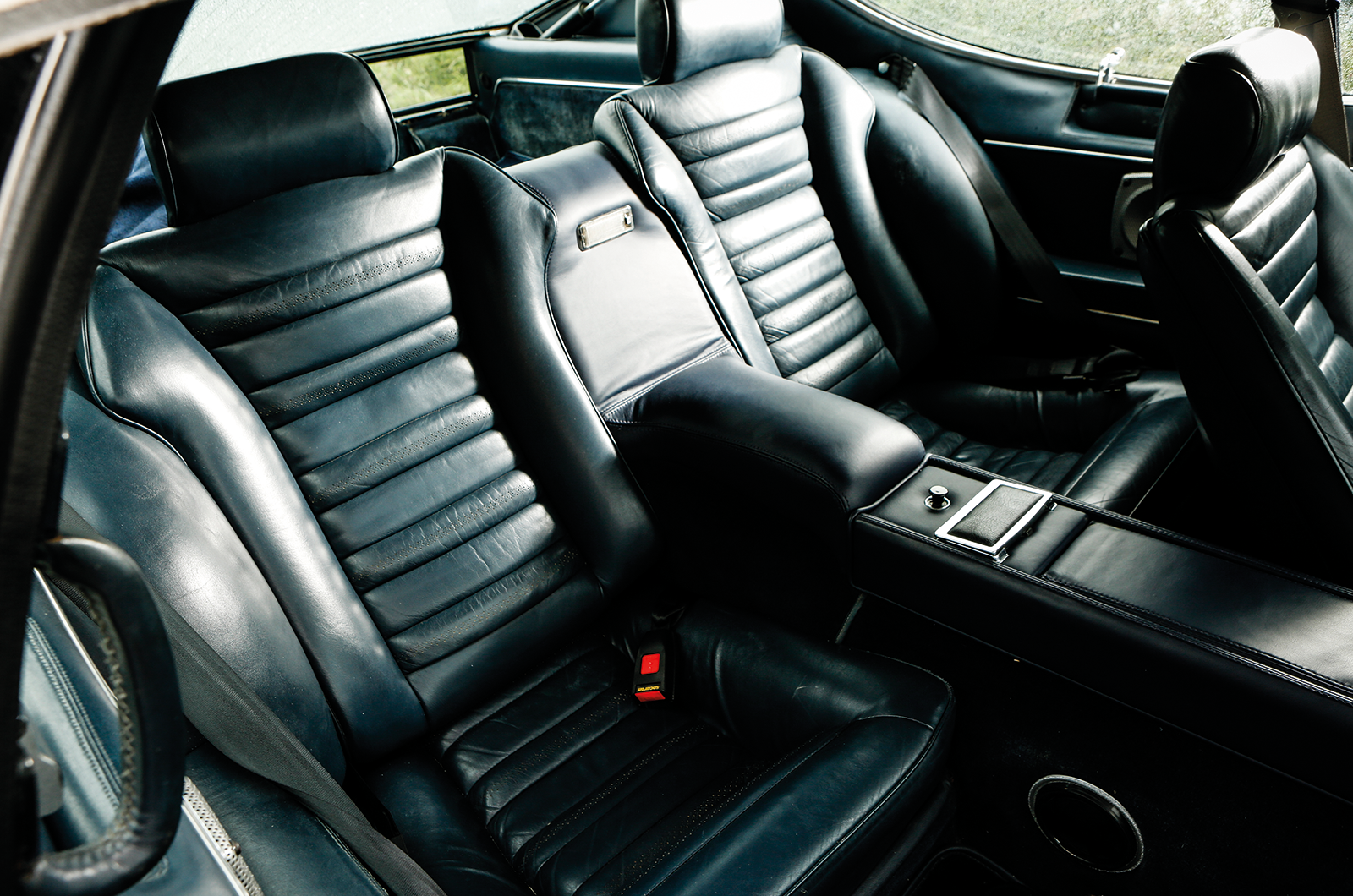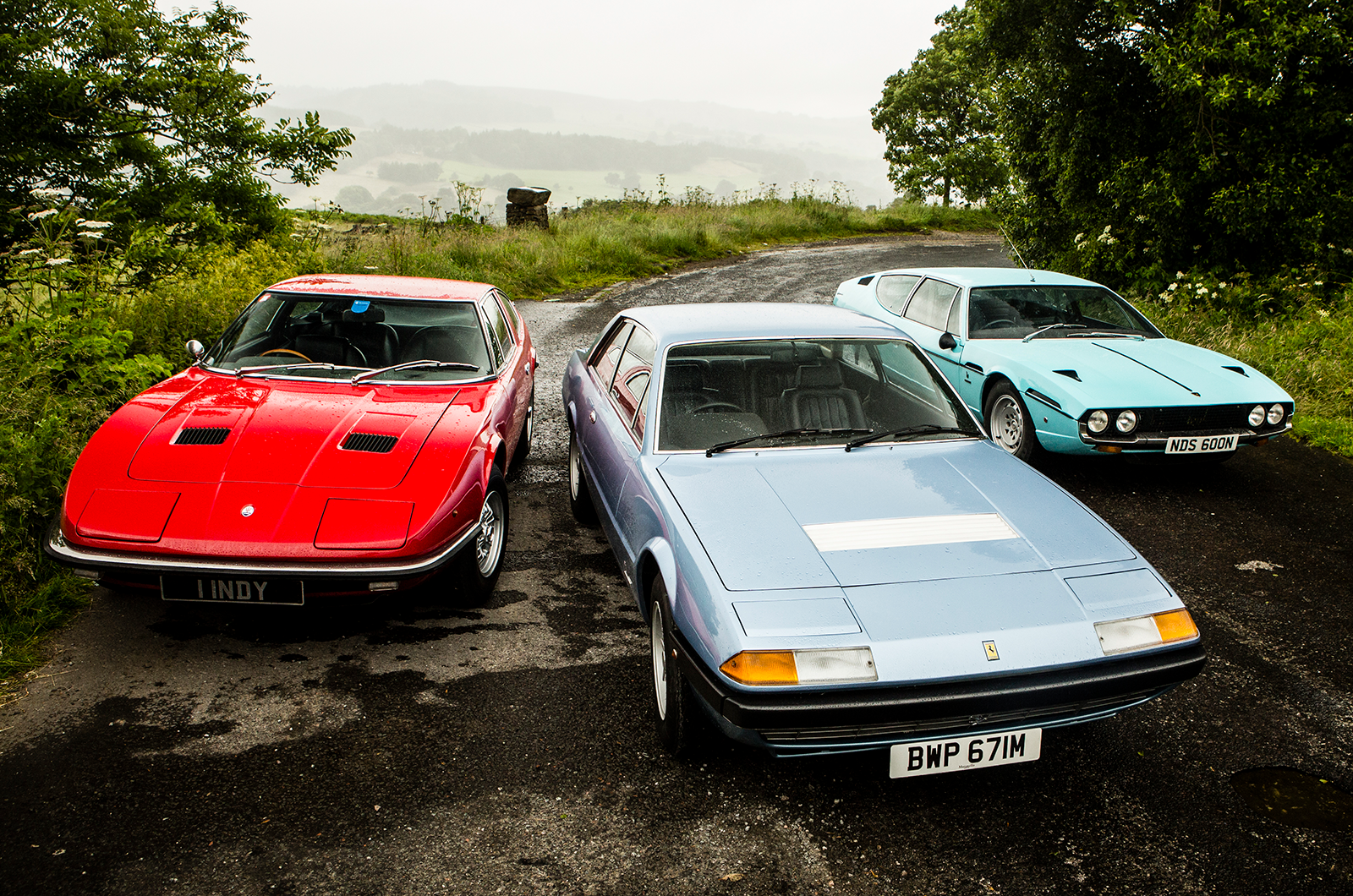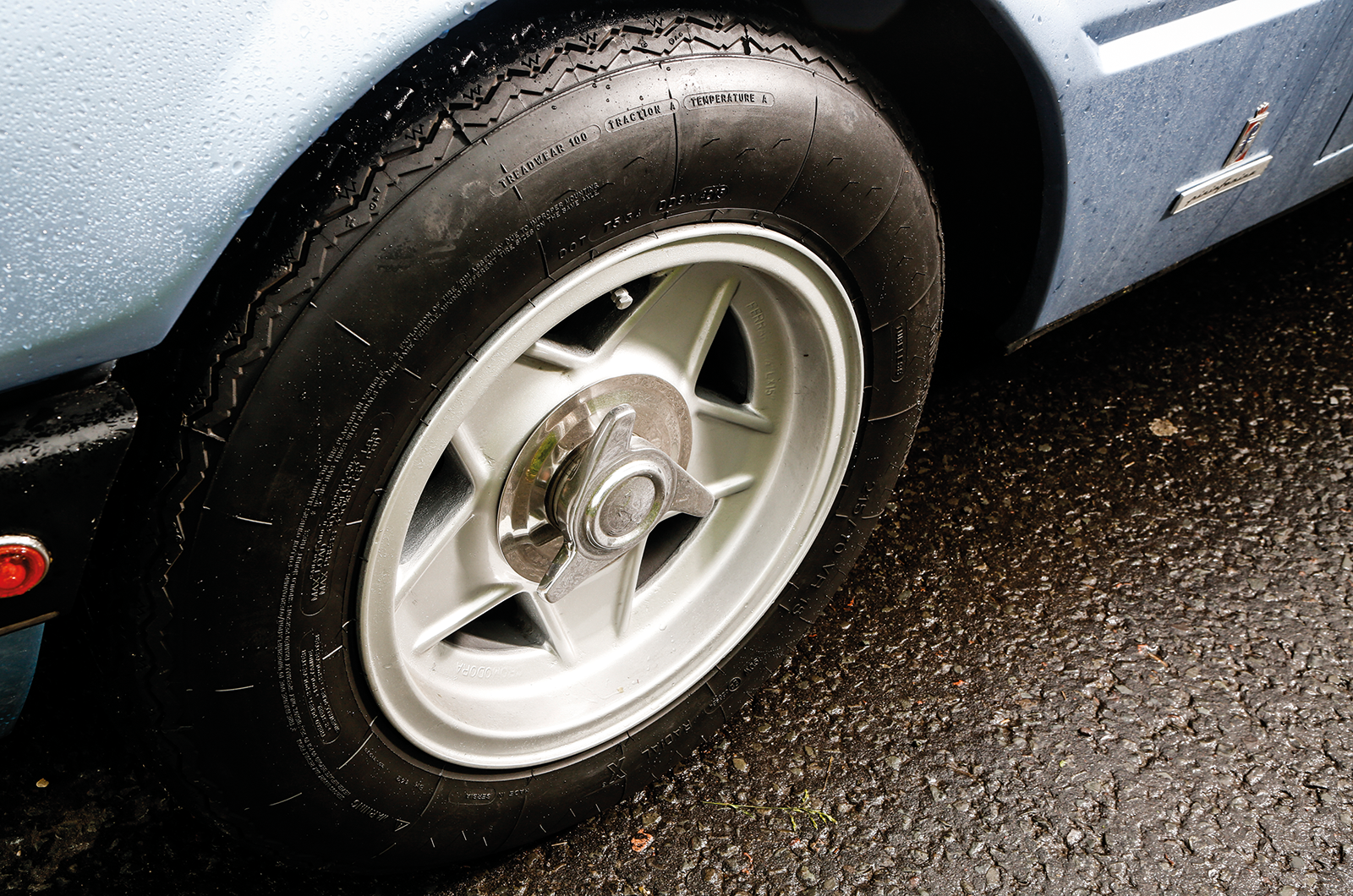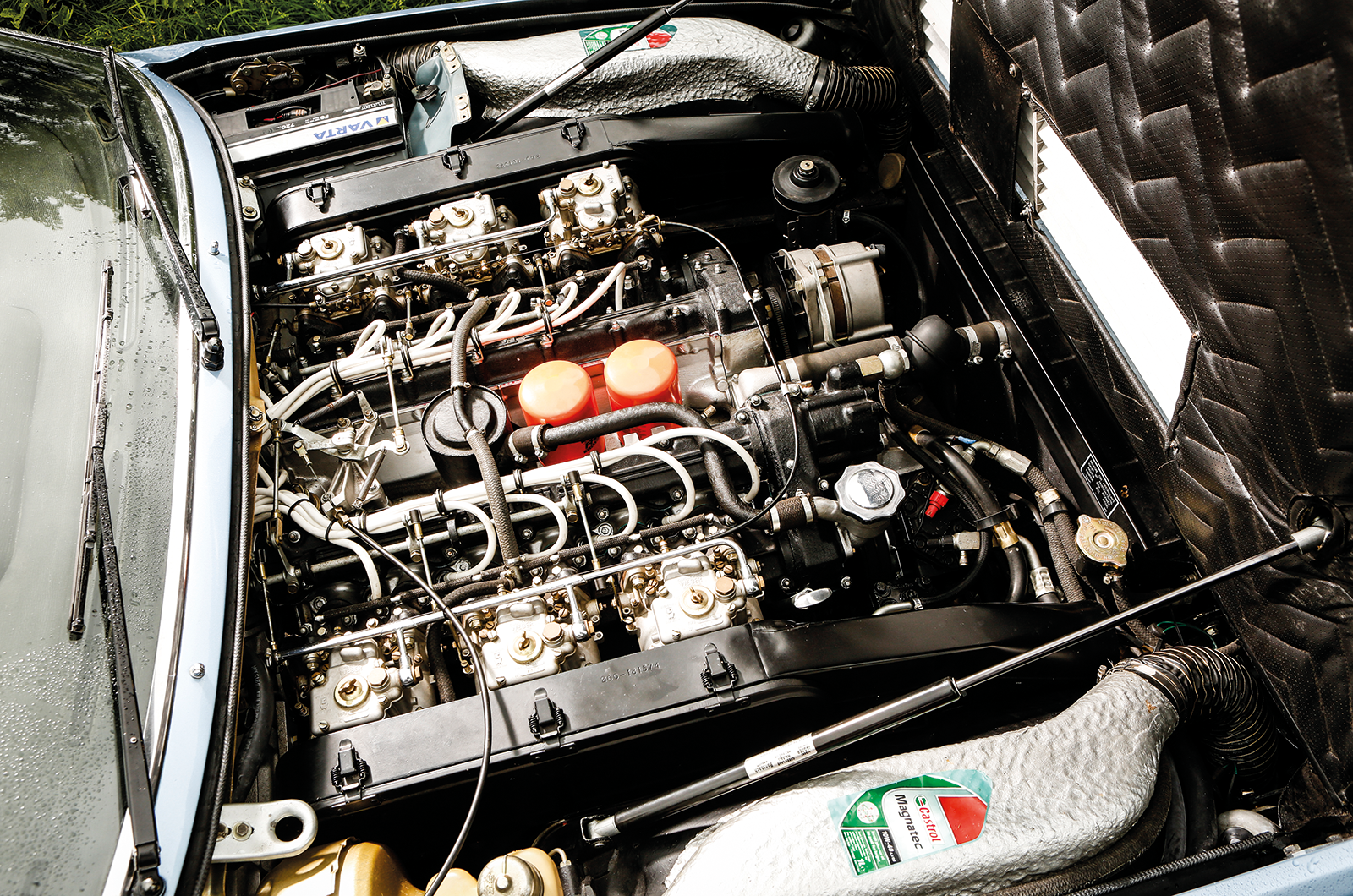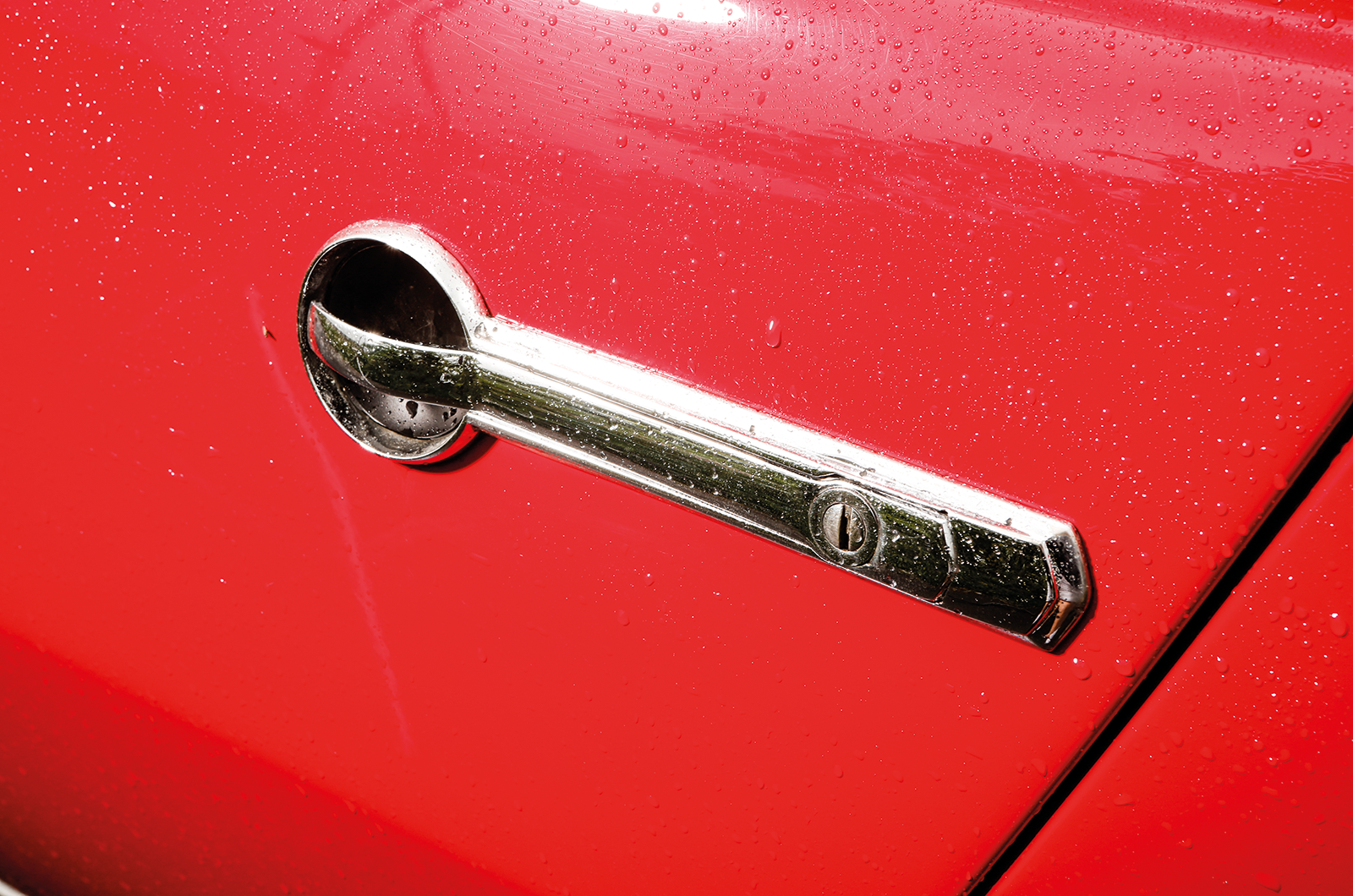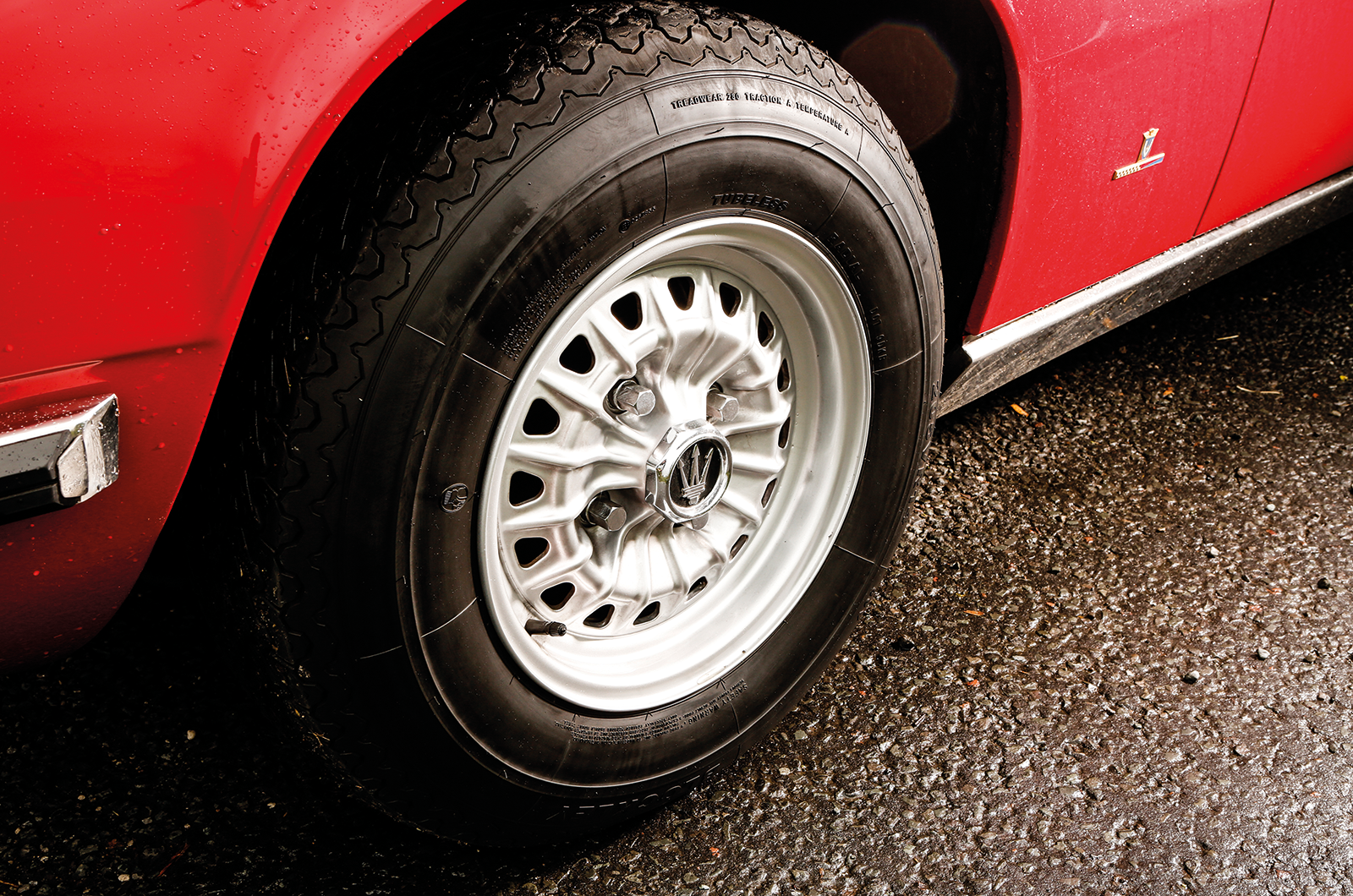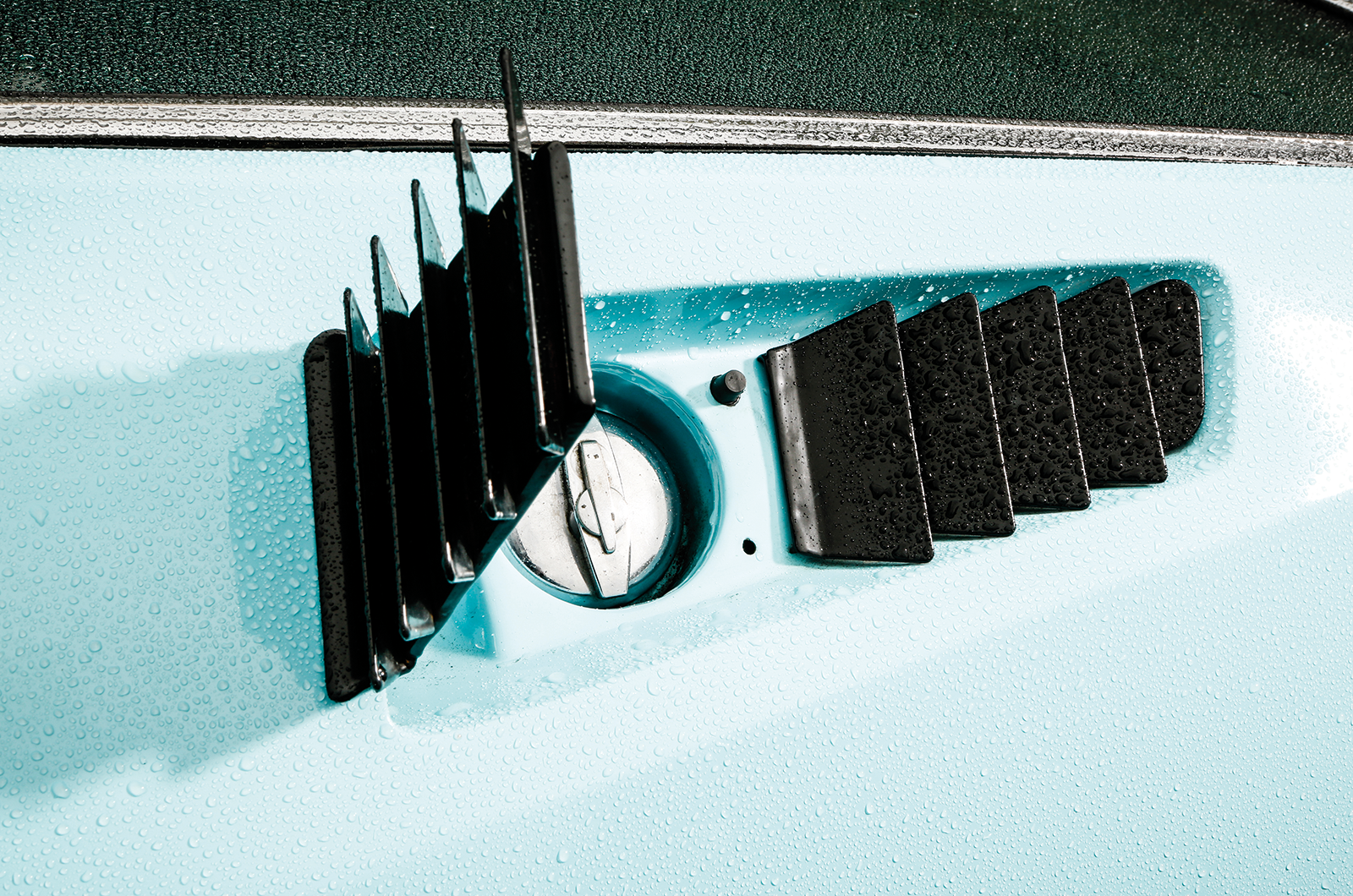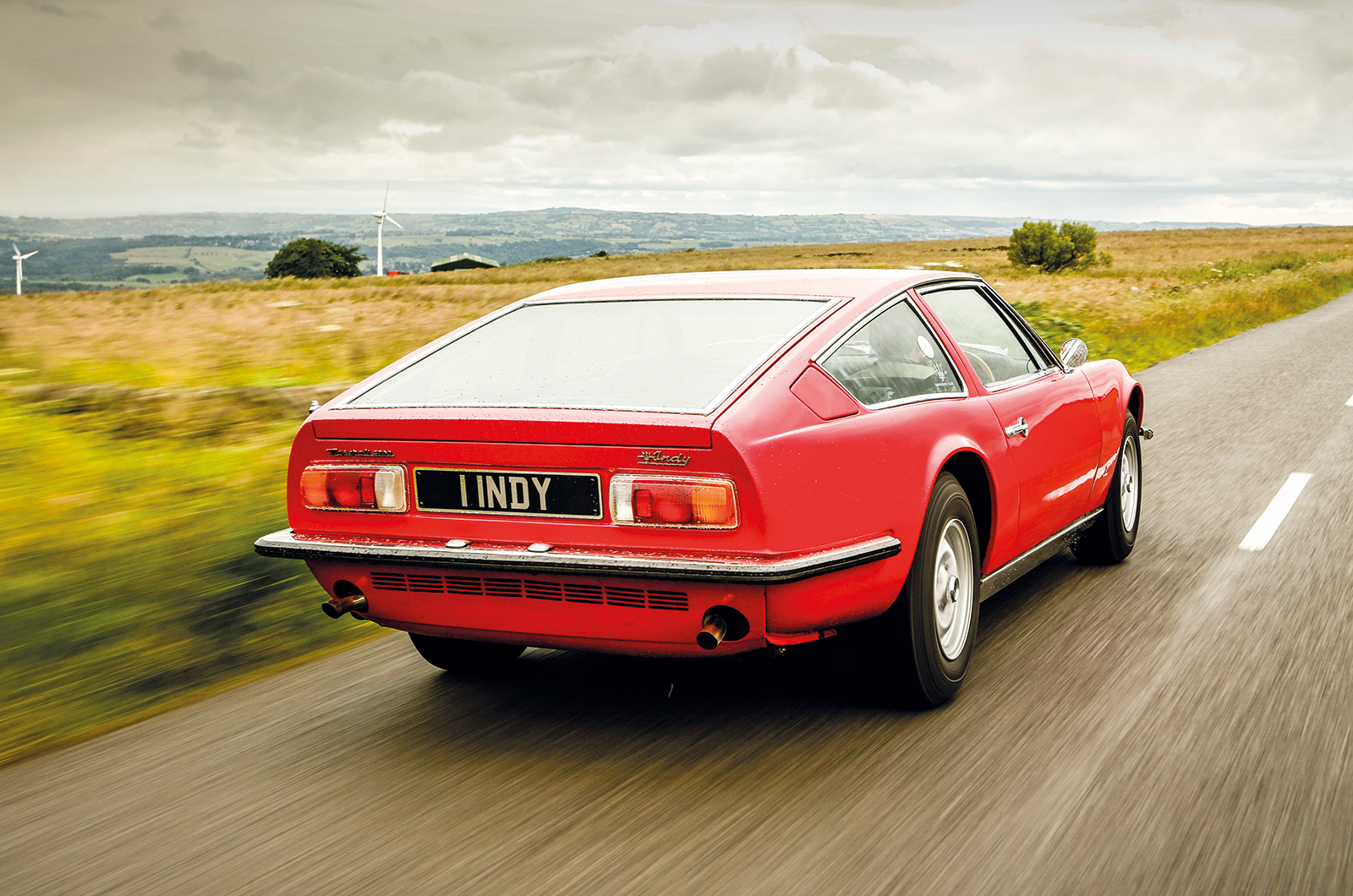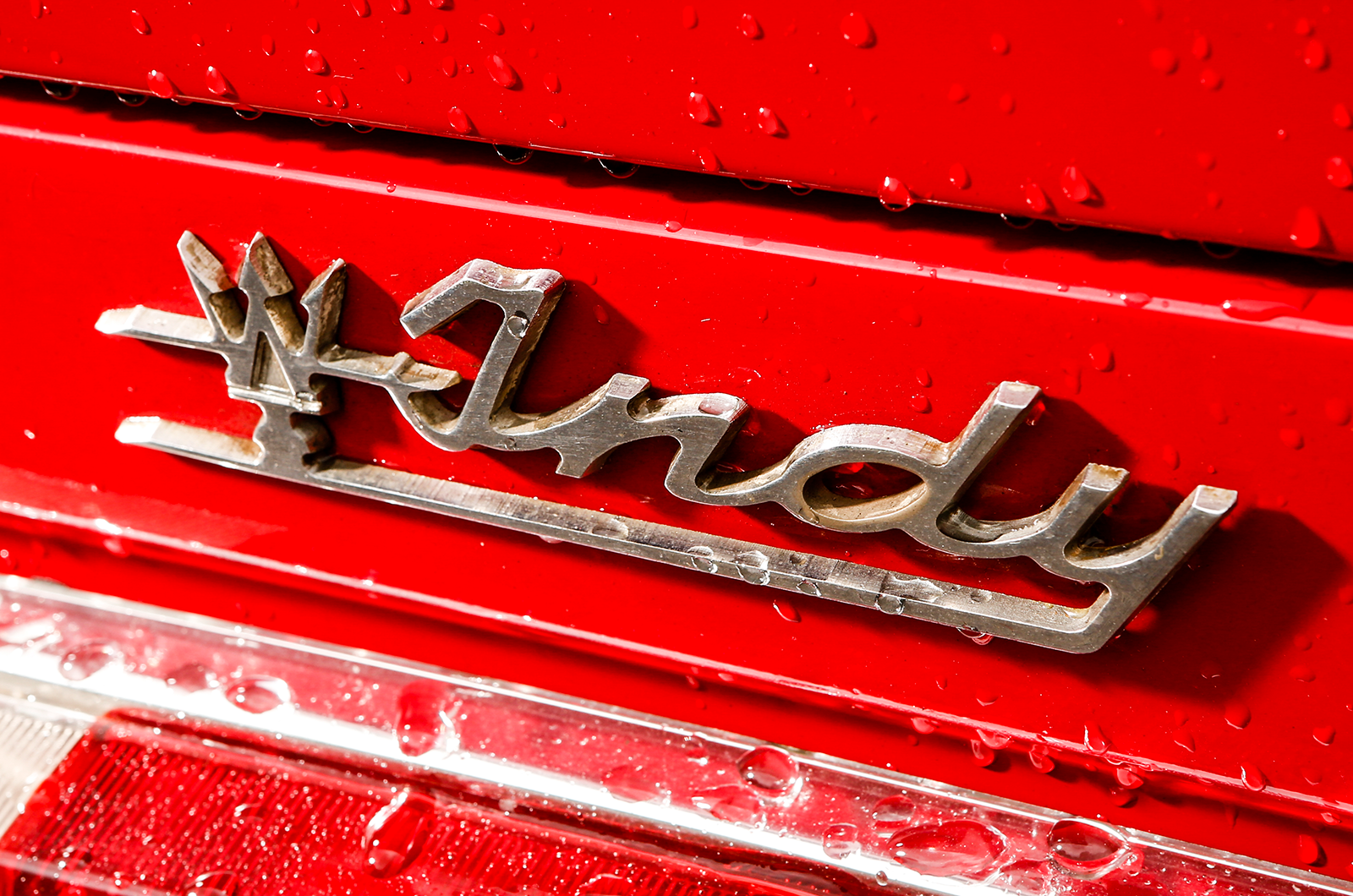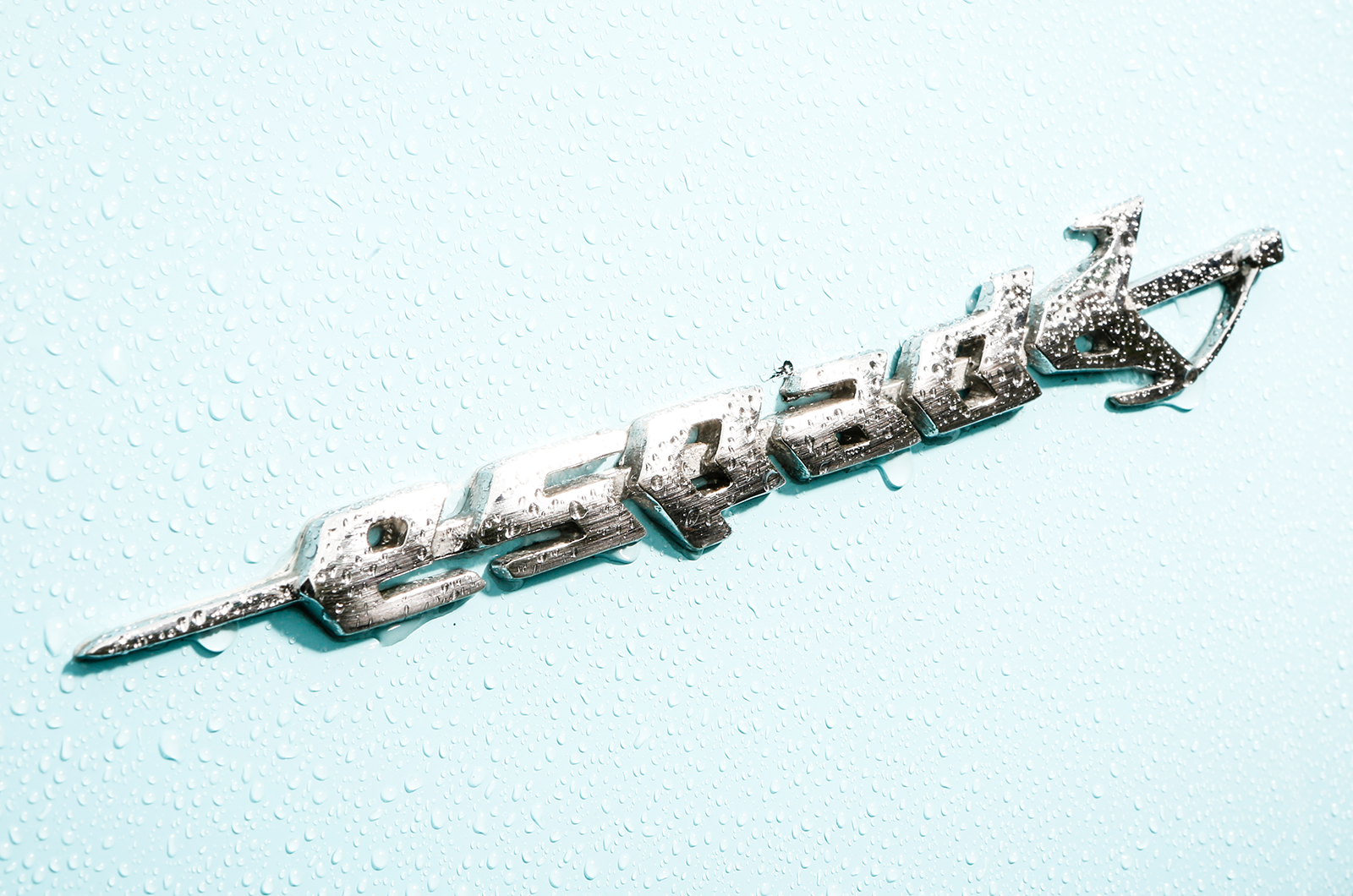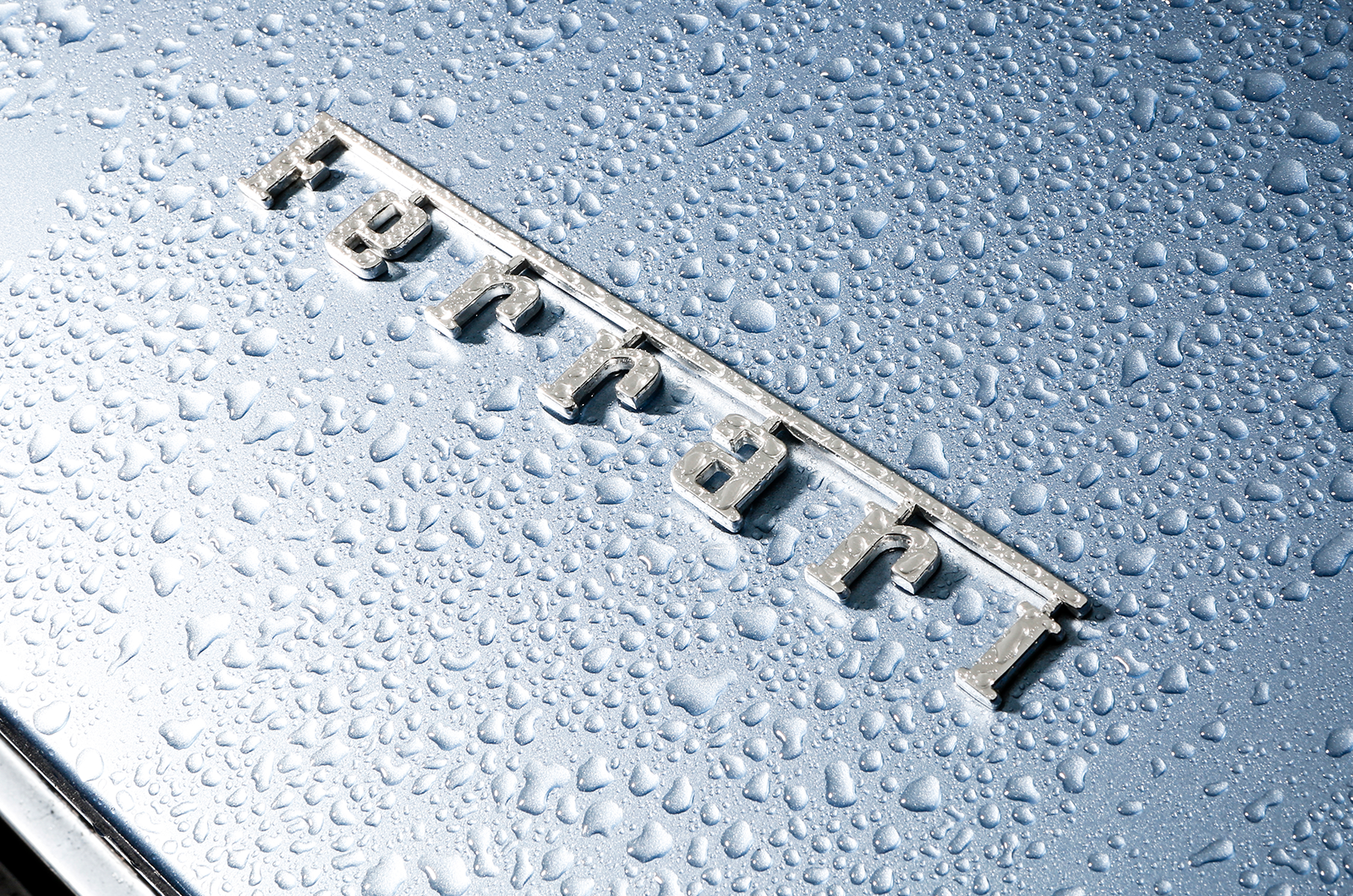Scrabble into the rear of the Espada and you’ll find that it is emphatically the roomiest for back-seat passengers.
It’s quite an airy and pleasant place to be, and the aircraft theme continues with windows that are top-hinged outwards for ventilation like those of a Beechcraft.
The Maserati isn’t far behind in leg space (but is a little short on headroom), while in fairness to the GT4, Ferrari never claimed that it was anything more than an occasional four-seater.
Clockwise from top: heavily bolstered rear seats but the Ferrari is the least roomy here; it’s remarkably spacious in the Espada’s rear; the Indy’s individual rear seats hold passengers in place
On the road you don’t give much thought to ride in either the Ferrari or Lamborghini at first, although somehow the huge expanse of bonnet on the Espada tends to suggest the front end is floating a little.
With wishbones and coils at each corner they take most surfaces in their stride, the Ferrari enjoying the additional sophistication of automatic self-levelling on the back.
The Indy has a conspicuously firmer ride over anything other than very smooth roads but is in other respects the most refined of the three in terms of road, wind and engine noise.
Its V8 gives away 50-60bhp to the V12s, but the husky pick-up is everything you could wish for, delivered with a sweet, smooth and sustained thrust from 2000 to a conservative 5500rpm.
It has a suave and discreetly expensive exhaust note, which makes more noise than an engine that has admirably quiet valvegear. There’s also a nicely spaced set of ratios in a gearbox that gets slightly loud with the oil hot, but which is otherwise a pleasure to use – although it cannot be rushed.
Three grown-up supercars
The Maserati feels very stable, slips its chiselled jaw through the air effortlessly and has wieldy, balanced handling that seems to amount to more than the sum of its parts.
By taming axle tramp and making the car relatively roll-free – as well as ensuring 50:50 weight distribution – Alfieri arguably perfected the post-war Maserati GT concept with the Indy.
The only flaw in that argument that I could find was the brakes, which were potent but had too much pedal travel.
Drive it for a while longer and you begin to think that you could live with this rather grown-up supercar.
In some respects, it gets nearer to the ‘Italian Rolls-Royce’ ideal than does the Lamborghini, which is as flamboyant as the Indy is (relatively) introverted.
Michelin 70-profile XWXs are de rigueur on 1970s supercars and ensure a decent ride (left); the Ferrari’s quad-cam V12 is fed through six Webers
But that’s the point of the Espada isn’t it? Standing no more than waist-high, it seems to go everywhere with a hysterical yowl – a gentle plume of blue smoke from the left exhaust is also pretty standard, so I’m told.
You actually have to rev it quite aggressively to extract the performance, using the lower gears to keep the revs up, although that’s hardly a chore.
That is not to say that the V12 lacks flexibility, which would of course be absurd. In fact it is supremely tractable at low speeds, helped by the smoothness of the clutch and the precise modulation of the throttle as you feed in the power.
Real urge doesn’t come steaming in until you hit 2500 or 3000rpm, but then you’re away.
Stylish details abound on the Maserati Indy, including unusual doorhandles and pretty alloys
When it was new, the V12 could safely rev to nearly 8000rpm (that’s 110mph in third) but even using a lusty 6000 as a limit, the Espada is quick.
Straights are dissolved in silky, sustained lunges, the apparent bulk shrinking rapidly. And as you pour it through curves, squeezing on the power to counter the (slight) understeer, you become increasingly conscious that the ride is very good.
You sit so very low – all four of you – in this unexpectedly friendly, good-natured car.
With its genuinely useful glazed tail it’s great for reversing and has an amazingly nifty turning circle. That’s just an added benefit of the pleasingly geared and weighted steering, which you only really notice is powered when parking.
There are unexpectedly plain alloys on the extrovert Espada (left); the fuel filler is hidden beneath a fake air vent
The big wooden gearknob, just a hand’s span from the wheel, controls a meaty, precise change that invites punchy, decisive shifts.
They feel so eager and crisp, you quietly admit that the automatic Espada was really a bit of an abomination.
The Ferrari is elegant and sharply tailored like a good suit, but only the silky timbre of its exhaust note turns heads.
When it was launched at the Paris Salon in ’72, there were those who thought that the sober lines – penned by the masterful Aldo Brovarone – were a disappointment. What they couldn’t know was that the basic shape would have an 18-year production run, the longest of any Ferrari by a very long way.
The one-of-524 Ferrari has a 2700mm wheelbase
Because Maranello and Sant’Agata came to such broadly similar technical conclusions, the two V12s feel largely similar to drive.
Possibly the 365 launches a little stronger and pulls a little harder beyond 100mph. It has similarly immaculate throttle feel and response (although the Webers gag if you mash the throttle too suddenly from low speed) and the power just keeps on coming; the sustained rush is the very essence of what these multi-carburetted V12s are all about.
If the Ferrari’s 0-60 in 6.6 secs and 120mph in 21 are not going to set anyone’s trousers alight today, remember that this is not a footballer’s toy but a sophisticated GT that delivers the goods with turbine smoothness from 2000-7000rpm.
The wide power band is perfectly matched to the ratios in a smooth-shifting gearbox with a particularly light, sweet clutch.
The Maserati Indy has a firmer ride
Only a twitch of the rev counter acknowledges that you have changed up and you just keep on pulling. You can break the law in second and get yourself banned for a month or two in third – still with two gears to go.
The 365 has great vision all round, although a much grander turning circle than the Espada.
It rides with similarly light-footed aplomb on its squidgy, doughnut-like 205-section Michelin XWXs (essential supercar-wear in the mid-’70s) and takes confident command of any cornering situation you are likely to encounter.
Steering that is positive but far from twitchy, plus the choice of gear ratios – combined with such delicious throttle response – mean you can tune your cornering attitude at will, depending on how the curves unfold.
Like the Espada, the Ferrari is compelling, flattering and generous to drive fast.
Our Martin Buckley is a big fan of all three classics
I loved the 365, but then I loved all three of these cars.
The Indy is charming and swift but really comes from a slightly different generation.
Under its hip Vignale body lies the sort of ’50s technology that is part of its no-nonsense appeal, but one could take a less generous view and dismiss it as an Italian Jensen.
The Maserati just lacks its V12 rivals’ fine edge of driver appeal, but does have many compensating virtues.
Lamborghini’s Espada still looks like nothing else
The 365GT4 symbolises the moment when Ferrari got its act together and went corporate.
In a way, it has an appeal that slips neatly between the Indy and Espada, combining the mechanical excitement of the latter with the conservative, traditional appeal of the former.
Perhaps it was a supercar designed for the world as it was, rather than the way people may have wanted it to be.
No, you have to love the Espada. It’s still in my Top 20. It is a true fantasy machine that, in its way, was as audacious as the Miura. If some of the fairy dust from that most drooled-over of supercars is starting to rub off on this Italian spaceship, it’s about time.
Images: Tony Baker
Thanks to Michael Roberts, Oliver Eaton, Cliff Graham; Maserati Club UK; Lamborghini Club UK; Tony Willis at the Maranello Sales archive
Information relating to owners was correct at date of original publication in September 2016
Factfiles
Lamborghini Espada
- Sold/number built 1968-’78/1217
- Construction steel monocoque, with aluminium bonnet
- Engine front-mounted, all-alloy, dohc-per-bank 3929cc V12, with six twin-choke Webers
- Max power 325bhp @ 6500rpm
- Max torque 290lb ft @ 5500rpm
- Transmission five-speed manual, RWD
- Suspension double wishbones, coil springs, telescopic dampers, anti-roll bar f/r
- Steering power-assisted ZF worm-and-sector
- Brakes discs, with twin servos
- Length 15ft 6¼in (4730mm)
- Width 6ft 1½in (1867mm)
- Height 3ft 11in (1195mm)
- Wheelbase 8ft 8½in (2650mm)
- Weight 3875lb (1761kg)
- 0-60mph 6.5 secs
- Top speed 158mph
- Mpg 14
- Price new £12,113 (1974)
Maserati Indy
- Sold/number built 1969-’75/1104
- Construction steel monocoque
- Engine front-mounted, all-alloy, dohc-per-bank 4719cc V8, with four twin-choke Webers
- Max power 290bhp @ 5500rpm
- Max torque 282lb ft @ 3800rpm
- Transmission five-speed manual, RWD
- Suspension: front double wishbones, coil springs rear live axle, semi-elliptics; telescopic dampers, anti-roll bar f/r
- Steering power-assisted ZF recirculating ball
- Brakes discs, with servo
- Length 16ft (4877mm)
- Width 5ft 10in (1778mm)
- Height 4ft 3in (1295mm)
- Wheelbase 8ft 6½in (2600mm)
- Weight 3638lb (1650kg)
- 0-60mph 7.5 secs
- Top speed 156mph
- Mpg 14
- Price new £9654
Ferrari 365GT4 2+2
- Sold/number built 1972-’76/524
- Construction tubular steel chassis, steel body with glassfibre floor, alloy bonnet and bootlid
- Engine front-mounted, all-alloy, dohc-per-bank 4390cc V12, with six twin-choke Webers
- Max power 325bhp @ 6200rpm
- Max torque 311lb ft @ 4600rpm
- Transmission five-speed manual, RWD
- Suspension double wishbones, coil springs, anti-roll bars; telescopic front dampers, self-levelling rear struts
- Steering power-assisted ZF worm-and-roller
- Brakes discs, with servo
- Length 15ft 9in (4801mm)
- Width 5ft 11in (1803mm)
- Height 4ft 4in (1321mm)
- Weight 3307lb (1500kg)
- Wheelbase 8ft 10½in (2700mm)
- 0-60mph 6.6 secs
- Top speed 152mph
- Mpg 12
- Price new £14,266 (1975)
READ MORE
Lamborghini Miura: The Italian Job reloaded
Open for business: Maserati A6GCS by Frua
Bargain supercars: Ferrari 348 vs Honda NSX vs Lotus Esprit
Martin Buckley
Senior Contributor, Classic & Sports Car
